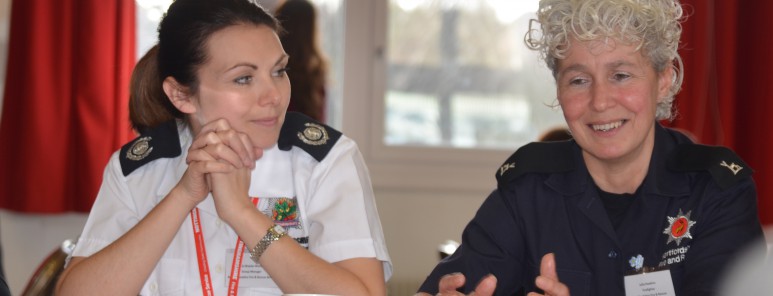A major national conference seeking to address the issue of gender balance in the UK fire and rescue service has been held in Sheffield.
More than 90 delegates from nearly 30 different organisations met at South Yorkshire Fire & Rescue’s Handsworth training centre for the event, hailed as the most important gender focussed event ever to have been held within the fire sector.
Keynote speakers included the Chief Executive of Kent Fire & Rescue, Ann Millington, and Becci Bryant, Deputy Chief Executive Officer at Staffordshire Fire & Rescue.
New research was also presented by researchers from the organisation Women To Work about the potential barriers experienced by women in the fire and rescue service, as well as possible solutions.
The findings were based on research carried out with employees at South Yorkshire Fire & Rescue, placing SYFR at the forefront of addressing women’s development issues within the UK fire sector.
Sector leading research
South Yorkshire Fire & Rescue’s Chief Fire Officer James Courtney, speaking at the event, said: “In my role as Chief Fire Officer I am rightly proud of much of the work we do in South Yorkshire- work that has helped make our communities safer than they have been at any time in my organisation’s history.
“But as someone who cares deeply about continuously improving and pushing myself and this organisation forward, I also try hard to be aware of our own challenges. We know that the issue of gender balance is a challenge for all fire and rescue services, which is what makes this event so important, providing an opportunity for real and lasting change.
“That’s why we opened ourselves up to the research. We hope that by opening our organisation up to this level of academic rigour and external scrutiny we can place South Yorkshire at the forefront of tackling gender balance within the fire and rescue service.”
Barriers and solutions
The research revealed the main barriers to gender balance in the fire and rescue service being the culture of an organisation. Although women are now an established part of the workforce, the pace of changes to organisational culture has often been much slower.
Other barriers cited included policies at work, including those relating to childcare and maternity leave, and promotion processes, where male colleagues often benefit from a certain level of informal networking and mentoring in a way which is not always open to women.
Women’s confidence and sense of self worth was also seen as a barrier, with many choosing not to put themselves forward for promotion even though they had all of the necessary competencies.
But research participants also came up with a long list of solutions to some of these issues, including more flexible working patterns, development programmes and mentoring schemes, a review of current promotion processes and developing managers to recognise talent beyond traditional command and control traits.
Benefits of a diverse fire service
Becci Bryant, Deputy Chief Executive at Staffordshire Fire & Rescue, spoke about the important contribution a diverse workforce and make to a fire and rescue service
“I strongly believe that effective leadership today requires a combination of skills that are viewed as traditionally feminine and those seen as gender neutral. Research shows that many skills needed for successful leadership today are often perceived as traditional female attributes.
“People who are collaborative, empathetic, loyal and selfless were shown to be more successful than those deemed proud, resilient or independent. I do think that we women are up for a good challenge and we are not afraid of making mistakes, I certainly know I have made plenty but that is how we learn and grow as individuals and as leaders.
“I do think that women have a fantastic range of interpersonal skills, which allow us to see beyond the immediately obvious and explore other avenues especially when it comes to working with other people.
“As we move forward in the challenges we face we cannot act as an island, we have to be collaborative and be prepared to work with others as well as admitting we don’t actually have the answers because the challenges we face are unique to ones we have experienced before,” said Becci.
Good leadership
In her keynote address, Chief Executive Ann Millington of Kent Fire & Rescue spoke about the important role senior managers play in promoting a diverse workforce and how perceptions of what makes a ‘strong leaders’ have dramatically changed in the last century.
“Leadership models have changed from a position as little as 75 years ago where physical size- first shorter leaders, then taller ones- was seen as being vital to strong leadership, which seems almost incredible to us now.
“Then, ‘traits’ like charisma, strength and authority became important- traits which are pretty difficult to define and ultimately poor indicators of what makes a good leader.
“Finally, we have arrived at a position where authentic leadership is being championed, with the ability to be yourself and be who you are at work now a much stronger indicator of good leadership”, said Ann.

